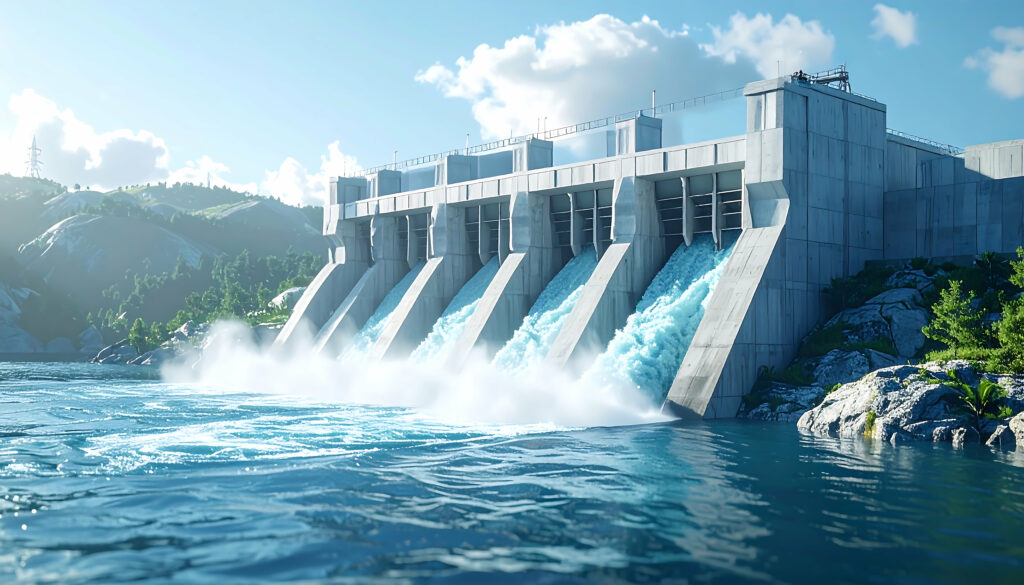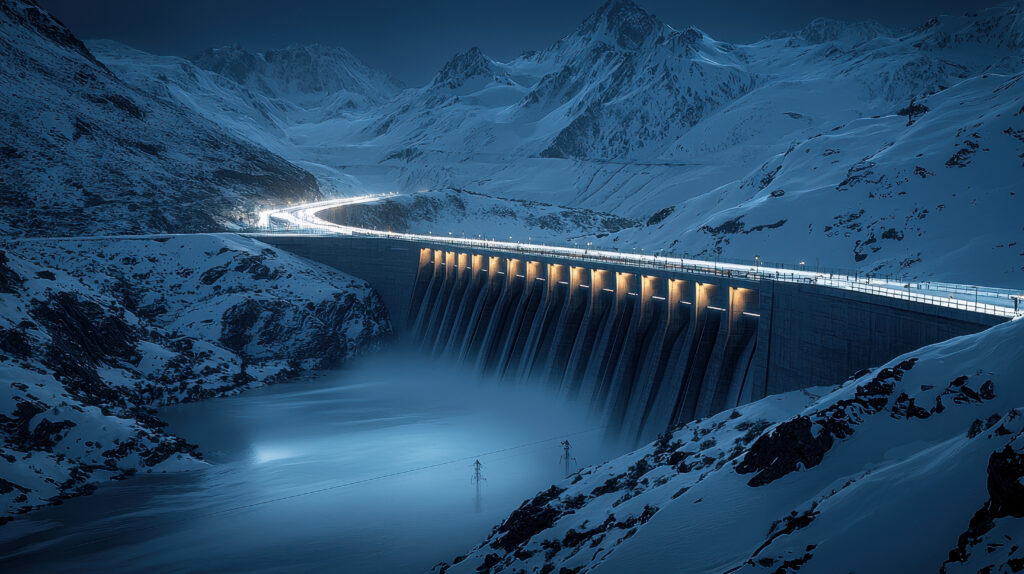



Hydropower, one of the oldest and most established forms of renewable energy, harnesses the energy derived from the movement of water. This comprehensive guide will delve into how hydropower works, exploring its various components, advantages, and environmental impacts, while also emphasizing its crucial role in the global renewable energy landscape.
How Hydropower Works
The fundamental principle behind hydropower is the conversion of potential energy of stored water into mechanical energy. When water flows from a higher elevation to a lower elevation, it gains kinetic energy, which can be harnessed to generate electricity through a turbine-generator system.
Components of a Hydropower System
-
Reservoir: A key feature of many hydro-power plants, a reservoir stores water. Stored water has potential energy, awaiting conversion to kinetic energy when released.
-
Dam: Not all hydropower systems require a dam, but those that do utilize it to create a water height difference. The dam controls water flow, essentially acting as a barrier that holds back water and creates a reservoir.
-
Intake: Water from the reservoir enters the intake, where it is funneled into the penstock—a large pipe leading to the turbine.
-
Turbine: As water flows through the penstock, it spins the turbine blades. This mechanical motion is the initial step in converting kinetic energy to electrical energy.
-
Generator: Attached to the turbine, the generator converts the turbine’s mechanical energy into electrical energy. This is accomplished via electromagnetic induction.
-
Transmission Lines: The generated electricity is then transmitted via power lines to homes, businesses, and industries.
-
Tailrace: Finally, after passing through the turbine, water exits the plant in a channel called the tailrace, typically returning to the river.
Types of Hydropower Plants
There are three main types of hydel Energy plants:
-
Storage (or Conventional) Hydropower Plants: These plants utilize a dam to store water in a reservoir, enabling energy generation during peak demands.
-
Run-of-River Hydropower Plants: These plants generate energy without significantly altering the flow of the river. They depend on the natural flow rate and elevation drop of the water.
-
Pumped Storage Hydropower Plants: These facilities store energy by pumping water to a higher elevation during low electricity demands and releasing it to generate power during peak demands.
Advantages of Hydropower
- Renewable: hydel Energy is a renewable energy source, relying on the water cycle, which is continuously replenished by nature.
- Sustainable: When managed properly, hydropower is environmentally sustainable, providing a consistent and reliable energy source.
- Low Greenhouse Gas Emissions: Unlike fossil fuels, hydropower plants produce minimal greenhouse gas emissions during operation.
- Economic Growth: Hydropower can stimulate local economies through job creation and by providing affordable electricity to communities.
Environmental Impacts of Hydel Energy
While hydel Energy is often seen as a greener energy source, it does have environmental downsides. Dams can disrupt aquatic ecosystems, impacting fish migration paths and altering water temperatures and sediment transport. Moreover, large reservoirs can flood considerable land areas, affecting wildlife habitats and local communities.
Future of Hydel Energy
Innovations in hydropower technology are shaping its future. The development of more efficient turbine designs, fish-friendly turbine technologies, and small-scale hydro systems are paving the way for sustainable hydropower solutions.
For further reading on renewable energy technologies and innovations, explore Andromeda Energy for insights on the various advancements in this field.
Conclusion
Hydel Energy plays a vital role in the global shift towards renewable energy. By converting the kinetic energy of flowing water into electricity, it not only contributes to reducing greenhouse gas emissions but also supports economic stability in various regions. As we look to the future, ongoing innovations in Hydel Energy technology promise to enhance its efficiency and minimize its ecological footprint, making it an essential part of our sustainable energy strategy.
By understanding how Hydel Energy works and its impacts on both the economy and the environment, we can make more informed decisions about its implementation and support its growth as a viable energy source for the future.
For Further Detail
https://www.renewableenergyworld.com/


Leave a Reply